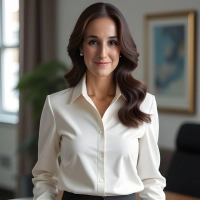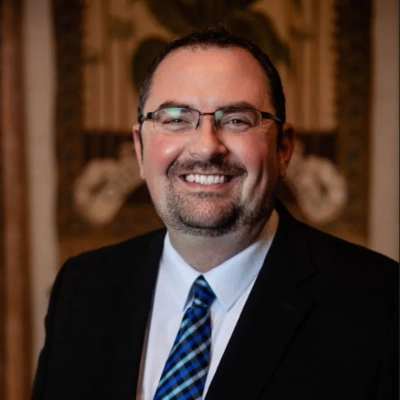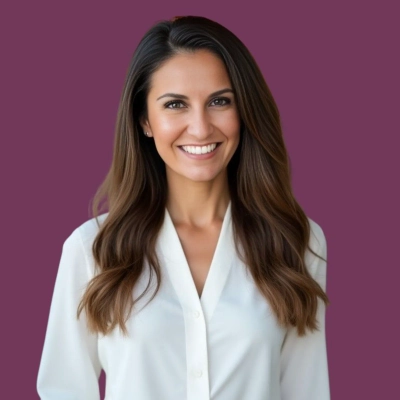9 Financial Goals I Once Thought Were Impossible but Finally Achieved
Achieving seemingly impossible financial goals is a journey many aspire to embark upon. This article explores nine strategic approaches to financial success, from automating retirement savings to creating passive income streams. Drawing on insights from industry experts, these proven strategies offer a roadmap for anyone looking to transform their financial future.
- Automate Savings for Retirement Success
- Focus on Customer Retention for Sustainable Growth
- Prioritize Equipment Ownership for Financial Freedom
- Build Emergency Fund Through Consistent Saving
- Create Passive Income with Bold Referral Program
- Boost Profits Through Strategic Tech Investment
- Treat Debt Repayment as Fixed Expense
- Replace Corporate Salary with Business Income
- Accelerate Mortgage Payoff with Consistent Overpayments
Automate Savings for Retirement Success
When I realized how far behind I was on retirement savings mid-career, building a substantial nest egg seemed nearly impossible given my timeline. I decided to implement an aggressive but necessary strategy of automatically directing 20% of each paycheck to my 401(k) and Roth IRA accounts. The first few months were admittedly challenging as I adjusted my budget and spending habits to accommodate this significant reduction in take-home pay. However, after about six months, this automatic savings approach became my new normal, and I was able to add over $45,000 to my retirement accounts in just two years. This experience taught me that financial goals that initially seem out of reach can become achievable through consistent, automated systems that remove the need for constant willpower and decision-making.

Focus on Customer Retention for Sustainable Growth
When I first started Zapiy, one of my "secret" financial goals was to hit $1M in annual recurring revenue without taking a single dollar of outside funding. To be honest, it felt more like a daydream than a plan. I was a first-time founder bootstrapping in a competitive SaaS space, and every growth blog I read seemed to emphasize the need for venture capital to scale.
In the early months, that number felt impossibly far away. We were juggling product bugs, marketing experiments, and customer support at all hours. There were weeks where I had to choose between paying for a new tool or setting aside something for payroll. Still, I held onto the goal — not because of the number itself, but because of what it represented: building something valuable, sustainable, and truly ours.
The turning point came when I stopped chasing every possible growth tactic and started focusing obsessively on one thing: customer retention. Instead of pouring all our energy into acquiring new users, we doubled down on making existing customers so happy they'd stay, upgrade, and refer others. That meant better onboarding, more personal support, and even unexpected thank-you gestures.
It wasn't overnight, but month by month, the compounding effect of loyal customers started to snowball. I remember the day we crossed that $1M ARR mark — it wasn't a champagne-popping celebration as much as a quiet moment of realization: the "impossible" was now just another line in our financial dashboard.
What I learned is that impossible goals often just require a shift in perspective. Instead of asking, "How can I get there fast?" I started asking, "What's the most sustainable way to get there at all?" That mindset not only made the goal achievable — it made it repeatable.
Prioritize Equipment Ownership for Financial Freedom
One financial goal I once thought was out of reach was owning all of my electrical equipment and vehicles outright—no loans, no lease payments, no monthly debt hanging over the business.
When I first started Lightspeed Electricals, cash flow was tight. Tools, specialized testing equipment, and work vehicles for a Level 2 electrician's job aren't cheap. At the time, the idea of paying for everything in full felt unrealistic. But I made a rule early on: if I couldn't afford it twice, I wouldn't buy it yet. Instead of chasing the latest gear immediately, I built a priority list—buying what was essential for safety and compliance first, then upgrading as profits allowed.
It took discipline, especially turning down jobs that required equipment I didn't yet own, but it kept me out of bad debt. I also reinvested a fixed percentage of every job back into equipment purchases, treating it as non-negotiable, like paying a bill.
Years later, hitting that milestone was a turning point. The business became leaner, more resilient, and better equipped to handle slow months without financial stress. The biggest lesson was that financial freedom in business isn't about making huge leaps—it's about consistently making smart, sometimes boring, decisions that protect your long-term stability. For me, that meant owning everything I needed to work at full capacity without owing anyone a cent.

Build Emergency Fund Through Consistent Saving
One financial goal I once thought was impossible was building a steady emergency fund for Estorytellers while also investing in growth. In the early days, every rupee felt like it had to be poured back into the business, and saving on the side seemed unrealistic. But I slowly started setting aside a fixed percentage of revenue each month, no matter how small.
Over time, that habit built a strong safety net. The first time we faced a slow season, instead of panicking, we were able to run smoothly because of those savings. That was the moment I realized the goal I once thought was out of reach was actually doable with consistency.
The big lesson for me was that small, steady steps create big results. Even when resources feel limited, prioritizing financial discipline gives you freedom and peace of mind to take bigger risks later.
Create Passive Income with Bold Referral Program
One financial goal I initially thought was impossible but eventually achieved was generating enough passive income to cover all my business's monthly operating expenses. At the time, it felt out of reach because I was relying solely on active income and struggling to scale consistently. The breakthrough came when I shifted focus to building a referral program that offered a 50 percent commission to customers and partners. At first, the high commission seemed risky, but I saw it as an investment in growth. I created a simple system for tracking referrals and made it easy for people to participate. Over time, the program gained traction, and referrals began bringing in consistent sales without direct effort from me. Eventually, the income generated from these referrals exceeded the fixed monthly costs of running the business. I learned that bold incentives can accelerate growth when paired with trust, transparency, and a system that values collaboration over control.

Boost Profits Through Strategic Tech Investment
One financial goal I initially thought was out of reach was significantly improving our company's profit margins without expanding our team. I took a calculated risk by investing in an advanced project management and automation system, which required a substantial upfront investment that honestly made me nervous at the time. The technology streamlined our workflows and eliminated many repetitive tasks, which ultimately allowed us to take on more clients without increasing our staffing costs. What I learned from this experience was that sometimes you need to spend money strategically to make more money, and that the right technological investments can transform business operations in ways that aren't immediately obvious. This experience taught me to look beyond short-term costs and focus on long-term value creation when making financial decisions.

Treat Debt Repayment as Fixed Expense
Paying off student loans within five years felt unattainable at first, especially while managing rent and daily expenses. The turning point came from treating debt repayment like a fixed expense rather than a leftover after discretionary spending. I automated extra payments each month, even if modest, and redirected any unexpected income—bonuses, tax refunds, or side project earnings—toward the principal. What I learned was that consistency mattered more than large lump sums. Seeing the balance decrease steadily created momentum and made it easier to stay disciplined. Achieving the goal earlier than planned reinforced the importance of structure in financial planning and showed that long-term goals become realistic once broken into smaller, automatic actions that remove the need for constant willpower.

Replace Corporate Salary with Business Income
One financial goal I once thought was impossible was replacing my corporate salary with income from my own business. In the beginning, it felt daunting to imagine generating that level of stability without the safety net of a paycheck. Over time, by focusing on steady growth, building authentic relationships, and staying disciplined with both spending and reinvestment, I reached that milestone. What I learned is that what feels impossible is often just unfamiliar—once you break it down into smaller, consistent steps, it becomes achievable. That experience taught me to trust the process and reminded me that financial goals are less about giant leaps and more about persistence and alignment with your values.

Accelerate Mortgage Payoff with Consistent Overpayments
Paying off a mortgage a decade ahead of schedule once felt unattainable, yet it became possible through incremental but consistent overpayments. The process began with rounding up each monthly installment by a modest amount, then applying tax refunds and occasional work bonuses directly to the principal. At first, the progress seemed negligible, but as the balance decreased, the compounding effect of reduced interest accelerated the payoff.
The lesson was that large financial goals rarely hinge on dramatic windfalls but instead on disciplined small actions repeated over time. That experience reshaped how other financial objectives were approached, emphasizing consistency and patience over quick fixes. It reinforced that persistence with modest contributions can shorten timelines that once seemed immovable.




